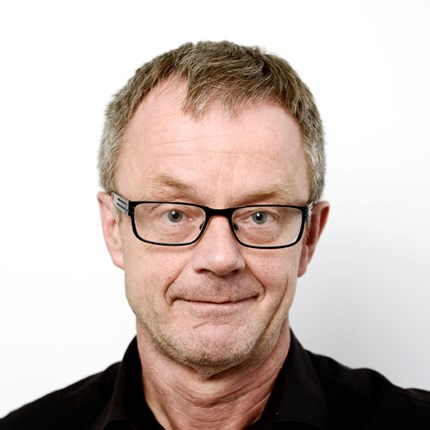
Pricing in the age of diversity
When readers are no longer loyal to their old print newspaper and prefer to surf the internet at their leisure, newspapers need to think outside the box if they are to hold onto their advertisers.
‘Previously, a store owner in Bergen had to advertise in the newspaper Bergens Tidene if he wanted to reach the city’s inhabitants. They almost had a monopoly on this group. Today, adverts on Facebook or Google, or even in foreign media, can be just as effective a way of reaching the same people,’ says Øystein Foros, professor at the Department of Finance and Management Science, NHH.

No longer loyal
Together with Professor Hans Jarle Kind of the Department of Economics, Foros has studied competition in the media market.
When readers go from loyally buying one newspaper, such as Bergens Tidene or Aftenposten, to following both newspapers and maybe several other publications on their own websites and on social media, the dynamics of the media market change.
Imagine that you want to advertise to people in Bergen who are following the American election. Maybe such a person will pick up a print version of Bergens Tidene and find the foreign affairs section, but it is just as likely that they will go on Facebook and see what is being posted there, or go directly to The New York Times' website, for example.
Washington Post
By registering where the computer is connected to the internet, an advertiser can book an ad in an American and any other online newspaper, and specify that it is only to be shown to customers who are in Bergen. Suddenly the whole world can compete to sell advertisements that were previously reserved for Bergen Tidene’s centre pages.
To illustrate, Kind opens the online version of the Washington Post and is met with an advert from Norwegian Air Shuttle for plane tickets from Bergen to Oslo.
When the product, in this case the readers’ attention, has gone from being unique to becoming something that many can offer, the pricing must change accordingly. Foros and Kind call this incremental pricing: You cannot demand more than the additional value the product adds over and above what other products can offer.

Incremental value
‘The incremental value is the value of what the competitor cannot offer. When competition increases, this value decreases,’ says Foros.
This principle applies to more than just the advertising market. The creators of the e-book reader Kindle, for example, used this principle when Apple launched its competitor, iPad.
Jeff Bezos, CEO of the Kindle manufacturer Amazon, acknowledged that many of their potential customers would buy an iPad, but that they might also buy a more customised tablet for reading if it was not too expensive. The price of a Kindle was therefore reduced from 260 to 139 dollars when the iPad was launched.
Nothing interesting
This principle can have consequences for both the organisation of the media, for example acquisitions and collaboration, and the content that each enterprise offers. Whereas we used to get all our news, including sport, culture, foreign affairs and politics from the same newspaper, this dynamic process, all things being equal, could be a driver for specialisation in the market.
Many people have argued that media financed by advertising results in everyone offering the same thing. As Springsteen sings: Fifty-seven channels and nothin' on. TV channels will stack reality series on top of each other.
REFERENCE
The NHH Professors Hans Jarle Kind and Øystein Foros, together with Professor Simon P. Anderson (University of Virginia), are behind the article ‘Competition for advertisers and for viewers in media markets’. The article has been accepted for publication in The Economic Journal. This is a prestigious journal that triggers NHH’s publication bonus of NOK 80,000 for the authors.
However, when the mass market becomes more accessible and the most important factor is offering eyes that others do not offer, Foss believes that the media can be driven in a more differentiated direction that is more focused on reaching specific groups.
Better adverts on the internet
It has, then, become easier to belong on several different media, which Foros and Kind call to ‘multi-home’. Previously, a large percentage of the population bought either Dagbladet or VG, two popular newspapers, every day, while a small proportion switched between the two and even fewer bought both papers.
‘It is much easier now to surf many different websites,’ says Foros.
In addition, a lot of the content on the internet is still free. A large percentage of the media have everything open and those that have chosen a payment scheme still offer a great deal free. If you have read your ten free articles in The New York Times, for example, you can start on your 20 free articles in the Washington Post and so on.
Offer something unique
‘So how can the newspapers make money in future?’
‘Newspapers need to offer something unique, something that is not that interesting or easy to copy. At the same time, payment schemes for online newspapers must be simplified. It’s easier to buy a house or a car today than it used to be to buy a newspaper on the internet, but there is still room for improvement,’ says Kind.
Kind adds that better ways of advertising on the internet are constantly emerging. Adverts on the internet have the advantage that they can be designed in many different ways, and, not least, that they can contain a direct link to a web shop.
‘Compared to reading an advert in a newspaper and then going to the shop, this makes a huge difference, so there are great opportunities for growth here,’ concludes Kind.
Text: Bendik Støren